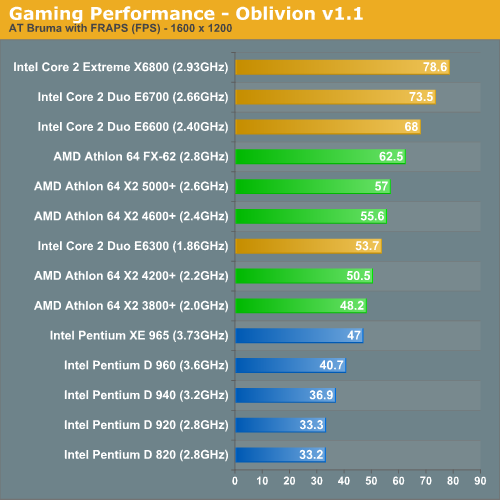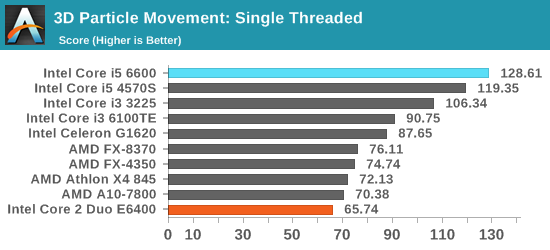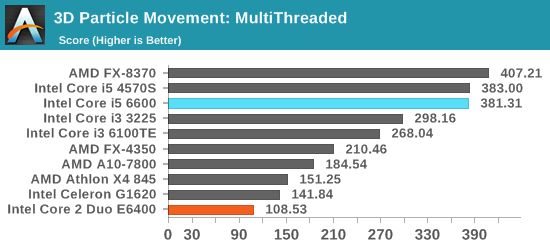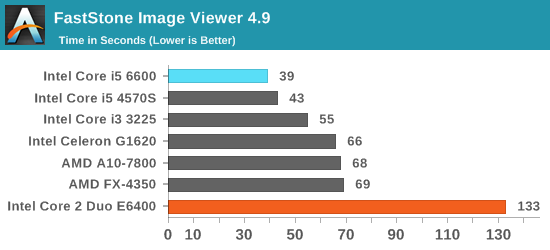Ten Year Anniversary of Core 2 Duo and Conroe: Moore’s Law is Dead, Long Live Moore’s Law
by Ian Cutress on July 27, 2016 10:30 AM EST- Posted in
- CPUs
- Intel
- Core 2 Duo
- Conroe
- ITRS
- Nostalgia
- Time To Upgrade
Core: Performance vs. Today
Looking back at Anand’s original review, and at a time where CPU performance made a lot of difference for gaming frame rates at 1600x1200, the conclusion was quite startling.
Intel's Core 2 Extreme X6800 didn't lose a single benchmark in our comparison; not a single one. In many cases, the $183 Core 2 Duo E6300 actually outperformed Intel's previous champ: the Pentium Extreme Edition 965. In one day, Intel has made its entire Pentium D lineup of processors obsolete.

Imagine something like that happening today. (Actually, if you believe what we’ve been told, AMD’s upcoming AM4 platform with Zen and Bristol Ridge might make its current desktop platform obsolete, but that’s a slightly different discussion because of how integrated graphics has adjusted the landscape for CPU focused silicon somewhat.)
That’s Intel vs. Intel though, against AMD it was just as damning.
Compared to AMD's Athlon 64 X2 the situation gets a lot more competitive, but AMD still doesn't stand a chance. The Core 2 Extreme X6800, Core 2 Duo E6700 and E6600 were pretty consistently in the top 3 or 4 spots in each benchmark, with the E6600 offering better performance than AMD's FX-62 flagship in the vast majority of benchmarks.
However, Core 2 Duo has now been out for 10 years. I’ve pulled up some benchmark data from our database to see if we have any matches to compare against processors that cost $214 today. The Core i5-6600 fits our bill perfectly, and there are two benchmarks which match up. I’ve also dotted the graphs with a range of more recent AMD and Intel processors for progression.



Our 3D Particle Movement is more for idealized synthetic workloads, however FastStone is all about image conversion and favors high frequency, high single threaded performance.
Naturally, modern processors nearing 4.00 GHz have a large advantage over the 2.13 GHz version of Core 2 Duo, as well as multiple generations of improved microarchitecture designs and smaller lithography nodes for power efficiency. However, has any processor family had as much nostalgic longevity as the consumer launch of Core? One could argue that while Core put Intel on top of the heap again, Sandy Bridge was a more important shift in design and as a result, many users went from Conroe to Sandy Bridge and have stayed there.










158 Comments
View All Comments
e1jones - Wednesday, July 27, 2016 - link
My E8400 is still my daily driver, 4x 2gb and an SSD swapped in later as the boot drive. Still runs great, except it tends to get bogged down by the TrustedInstaller and the Firefox memory leaks.rarson - Friday, August 5, 2016 - link
I've got an E8600 in an Abit IP35 Pro motherboard. I was having a hard time finding DDR2-1066 last I looked, so I settled for 800. With an SSD and 7870, it's surprising how well it still games. I don't think I'll upgrade the GPU again just due to the fact that I'm limited to PCI-e 2.FourEyedGeek - Monday, August 8, 2016 - link
You could get a higher end GPU and still benefit from increased performance, then get a new CPU motherboard combo when you want too.BrokenCrayons - Wednesday, July 27, 2016 - link
I just upgraded out of a Q6600 and 4GB DDR2 about 2 months ago and I admit that I was still kicking around the idea of leaving it alone as I was pulling the motherboard out of the case. I replaced it with a cheap AMD 860k and 16GB DDR3 which really hasn't done a lot to improve the system's performance. In retrospect, I think I could realistically have squeezed another couple of years out of it, but the motherboard's NIC was iffy and I really wanted reliable ethernet.As for laptops, I've got a couple C2Ds kicking around that are perfectly adequate (T2310 & P8400) for daily use. I really can't see any point in replacing them just yet. Core was a good design through all its iterations.
Beany2013 - Wednesday, July 27, 2016 - link
I like your style - rather than drop $100 on a midlevel intel NIC, you replace an entire platform.I strongly approve of these economics :-)
Michael Bay - Thursday, July 28, 2016 - link
USB3 is kind of nice.BrokenCrayons - Thursday, July 28, 2016 - link
Well the NIC wasn't the only reason, but it was the last in a series of others that I was already coping with that tipped the scales. The upgrade was under $200 for the board, processor and memory so it really boiled down to one weekend dinner out to a mid-range restaurant. It was worth it for more reliable Steam streaming and fewer VNC disconnects as that wired ethernet port is the only means by which I regularly interact with my desktop since it has no monitor and is crammed into a corner in my utility room.artk2219 - Friday, July 29, 2016 - link
Why didn't you go for an FX if you dont mind me asking? You liked the FM2+ platform a bit better?BrokenCrayons - Friday, July 29, 2016 - link
Actually, I didn't give much of anything in the system a very close look before buying. I admittedly did about twenty minutes of research to make sure the 860k and the bottom feeder motherboard I'd picked would play nicely together before making a purchase. So the CPU & motherboard pair were the result of laziness and apathy rather than a preference for FM2+.artk2219 - Monday, August 1, 2016 - link
Ah ok gotcha, I just wanted to share that if you had a microcenter near you they sell FX 8320E's bundled with motherboards for 125 to 170 depending on which board you want to use. That can be quite the steal and a great base for a new cheap system once you bump the clocks on the 8320E.